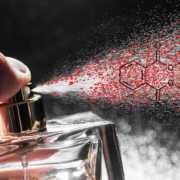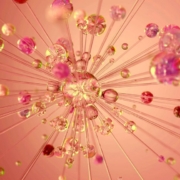What Does Hypoallergenic Mean?
The term hypoallergenic has been widely used since the 1950s to promote a variety of home products ranging from fragrances to cosmetics to detergents and even certain types of pets such as dogs and cats. But it’s always vague to most people exactly what hypoallergenic means.
If you have susceptibility to allergies and often try to avoid allergic reactions, but are confused about “what does hypoallergenic mean”? – then keep reading.
In this article, we’ll unfold exactly what hypoallergenic means and why it’s vital for your health. But before we get started with the term hypoallergenic, it’s worth knowing the basics of allergic reactions first. So, let’s take a deeper look.
Table of contents
-
What are allergic reactions?
-
What does hypoallergenic mean?
-
The hypoallergenic deceit
-
Fragrances claiming to be ‘hypoallergenic’ aren’t always necessarily safe
-
Check labels and know the ingredients
-
Final words
What are allergic reactions?
Allergies are abnormal responses of the immune system to certain foreign ingredients known as allergens such as dust mites, pet dander, mold spore, bee venom, pollen, or food that generally doesn’t harm a human body.
A healthy immune system targets potentially harmful invaders such as viruses, bacteria, and fungi. However, in an allergic person, the immune system becomes overactive and has difficulty differentiating between potential invaders and harmless substances.
As a result, the immune system gets confused identifying certain harmless foreign substances and mistakenly launches an attack sometimes even against healthy tissues, and causes inflammation and other symptoms of allergic reactions.
The severity of allergic reactions may vary from person to person and may range from mild irritation to life-threatening emergencies.
A mild allergic reaction may cause red and itchy rashes on the skin, stuffy or runny nose, itchy and watery eyes, headache, and sneezing among others.
In worst cases, an allergic reaction may lead to anaphylaxis, which is a life-threatening medical emergency.
Symptoms of severe allergic reactions (anaphylaxis) may include:
- Shortness of breath or wheezing
- Swelling of tongue, lips, and throat
- Skin hives
- Low blood pressure
- Rapid pulse or heart rate
- Fainting, vomiting, dizziness, and confusion
What does hypoallergenic mean?
The term “hypo” refers to “less”. The word “hypoallergenic” refers to something less likely to cause allergic reactions, but it doesn’t necessarily guarantee that it won’t produce any allergic reactions.
A large number of home products ranging from perfumes to cosmetics have been labeled as “hypoallergenic” for many years. Companies are producing products and using the term “hypoallergenic” to claim that the materials used to produce the product are “safe for sensitive people”. But there’s no assurance that this is the case.
In fact, there are no official organizations or government authorities to verify the claim of hypoallergenic products or manufacturing processes. Big manufacturers use the term “hypoallergenic” to convince people that their products are “allergy tested” and safer. But the label “hypoallergenic” doesn’t have any truly meaningful sense. It’s used purely for marketing purposes to beat other competing products.
The hypoallergenic deceit
The word “hypoallergenic” was first framed in 1940 and began being popular in areas of marketing and advertising in the 1950s.
According to the FDA (Food and Drug Administration), the United States has been trying to regulate the use of the term since the 1970s, particularly as it involves the allergic materials used in the cosmetic industry.
In 1973, big corporations from the global fragrance industry came together and formed a new international association aimed at creating and regulating fragrances that can protect European citizens from the potential threats of harmful substances.
This organization is wanted and controlled by the big corporations and therefore absolutely not independent. They have banned the use of certain natural aromatic compounds as allergenic, and have marked (harmful?) synthetic materials as hypoallergenic, mainly because the poor substitutes are much cheaper than the natural ones. So we are now in the absurd situation where natural substances are presented to us as essentially toxic and chemicals as healthy!
In 1974, the FDA (Food and Drug Association) attempted to establish definitions and regulations for the term “hypoallergenic” in order to regulate the use of this term on the labels of products. But the FDA regulation requiring manufacturers to go through several tests to prove the claim that a product is truly “hypoallergenic” was challenged by some cosmetic giants and it has been struck down in a Federal court.
However, the FDA stated that “There are no Federal standards or definitions that govern the use of the term hypoallergenic. The term means whatever a particular company wants it to mean. Manufacturers of cosmetics labeled as hypoallergenic are not required to submit substantiation of their hypoallergenicity claims to FDA.“
Fragrances claiming to be hypoallergenic aren’t always necessarily safe
Since the “hypoallergenic” synthetic materials especially fragrances used in cosmetics and synthetic perfumes aren’t regulated by any official organization, the prevalence of allergic incidence especially skin allergies such as contact dermatitis is rising day by day. In simple words, products labeled as “hypoallergenic” may not be actually hypoallergenic, nor specially formulated to meet the unique needs of sensitive people.
There are no standardized criteria for manufacturers to claim “hypoallergenic” on the labels of their products. Products carrying hypoallergenic labels may still contain strong allergic compounds such as synthetic chemicals derived from phthalates that aren’t listed in their ingredient lists but mask the inherent smells of other harmful substances. Many synthetic compounds, even though claimed to be “hypoallergenic” may act as strong allergens or irritants to the human body and skin.
Check labels and know the ingredients
If your immune system is overactive and you’re susceptible to contact dermatitis or any type of allergy, you need to check the list of ingredients stated on the labels. This will ensure that the product doesn’t contain anything that can trigger an allergic reaction on your body.
Final words
“Hypoallergenic” is a vague term that doesn’t carry any clear sense of purity. Manufacturers don’t need to conduct any tests to use “hypoallergenic” on their products’ labels. The IFRA (International Fragrance Association) marked synthetic materials as “hypoallergenic”.
In fact, hypoallergenic is mainly used for marketing purposes to convince consumers, but there’s no assurance that the product carrying “hypoallergenic” labels is less likely to cause any allergic reactions.
Check out our Guarantee of Naturality manufacturing policies and our Natural Perfumes that don’t contain any synthetic materials, often the cause of allergic reactions.
SEE ALSO:
Why phthalates in perfumes are dangerous?
Perfume allergy – Symptoms, causes and cure
Scent of Danger: Are There Toxic Ingredients in Perfumes and Colognes? (from Scientific American)






















Leave a Reply
Want to join the discussion?Feel free to contribute!